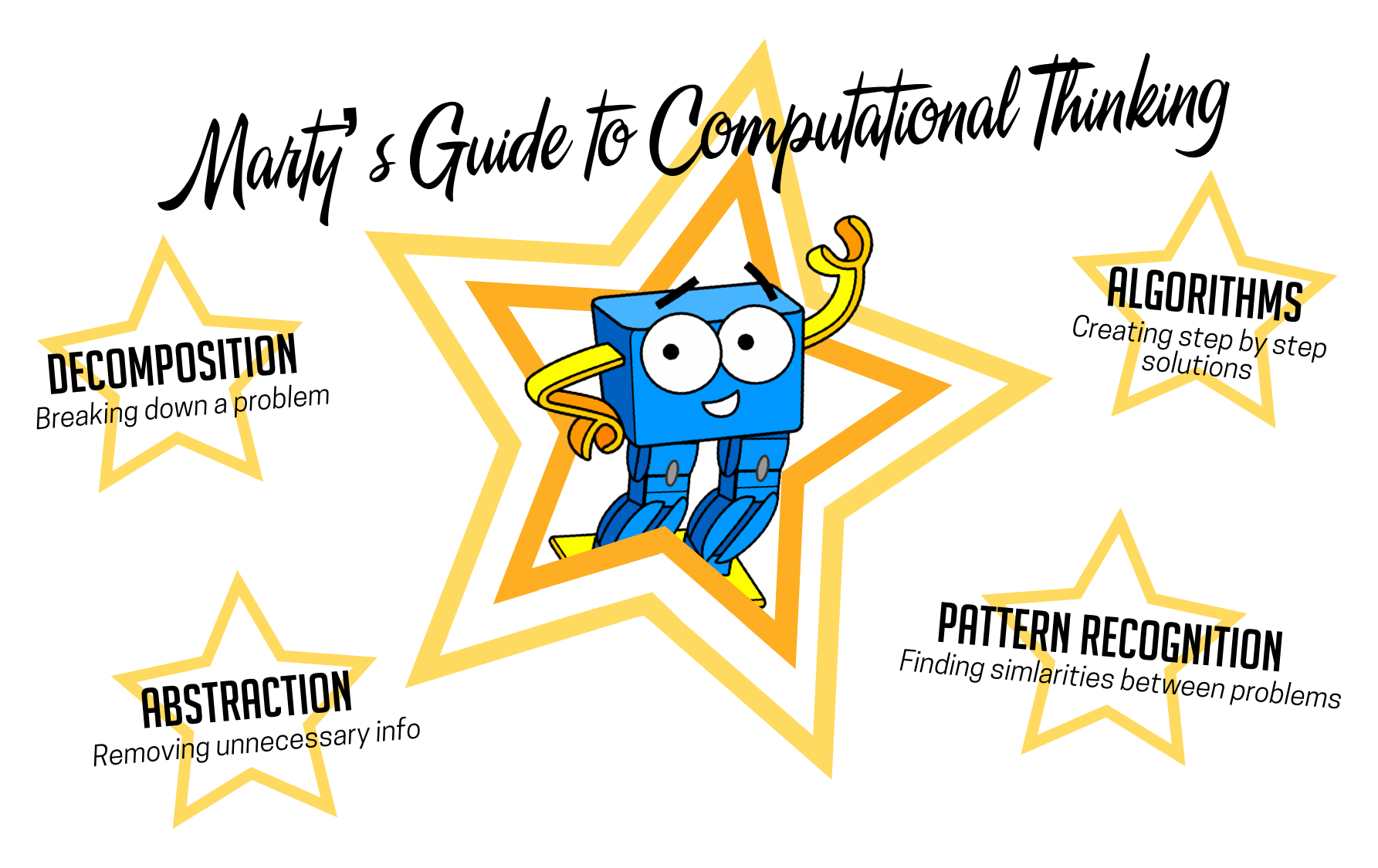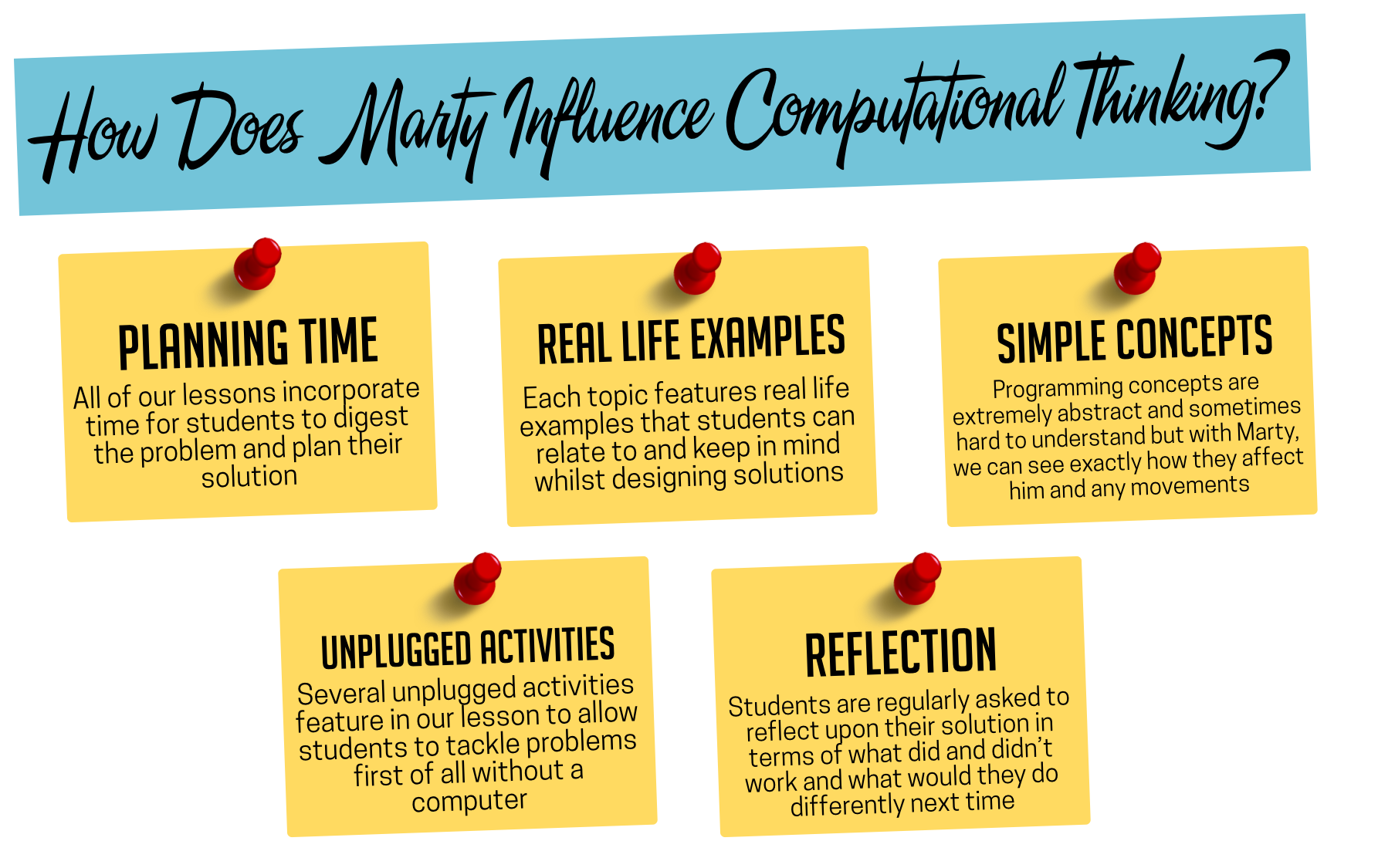The term, Computational Thinking, is being discussed and used a lot in education at the moment, but what does this actually mean and is it something that is worth trying to incorporate into your lessons?
Basically, computational thinking is a way of describing the approach that students take to solve problems not just in the classroom, but the outside world too. By introducing and encouraging students to take this approach towards tasks that are set in class, they are developing the skill set to enable them to tackle problems in any domain. We can break computational thinking into four main concepts,

These can be seen as the four building blocks towards creating effective learners who will have the skills and approach to solving problems. Given a problem, students should be able to break it down into small steps/tasks using decomposition whilst abstracting the problem by removing unnecessary information in order to focus on the main tasks at hand. Planning the solution requires students to compare the different sub-problems to recognise patterns before creating a step by step plan called an algorithm to action their plan.
Essentially, the aim here is to ensure that we are teaching skills that students will be able to take and use in the future without being given the exact same problem that was covered in class again. But, how does including Marty into the classroom help with promoting a computational thinking approach to problem solving?

These are only some of the ways that having a Marty in the classroom will help with promoting a computational thinking approach. Although all equally important, we believe that being able to see how each individual line of code comes to life through Marty and his movements allows for greater understanding and reflection upon what the student is doing and what they can achieve next.
Although computational thinking is primarily an approach taken in computing subjects, it is something that can be adapted for additional subjects as the key theme here is preparing students for their future by giving them the skills to solve problems - which Marty is perfect for helping with!
